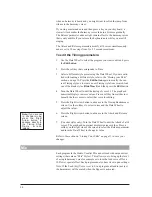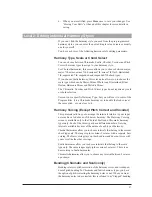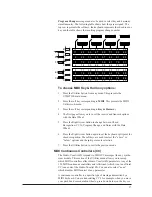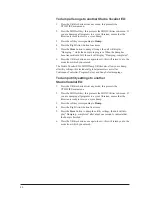
29
To edit the harmony style parameters:
1.
Use the Data Wheel to select the program you want to edit and press
the
Edit button
.
2.
Press the softkey that corresponds to the Harmony parameter. The
LCD shows the the current softkey selected by an arrow, its harmony
style in quotation marks, and the other softkey assignments.
3.
Press the softkey you wish to edit. The style display show this key’s
assignment.
4.
Press the
Edit
button. The Harmony Type selection screen is dis-
played.
Your choice here affects the order and selection of editing screens because
each different harmony type has its own set of parameters. Rather than
explaining the location of editing screens in text, what follows is a table
showing the screens in the order in which they appear.
The Arrow buttons guide you to the next or previous screen, the softkeys
select the different editing fields and the Data Wheel is used to change the
values.
Edit screen layout by harmony type:
CHROMATIC:
Harmony Type : Voicing : Bending : Pitch Bend : Portamento Rate : Customize : Style Name
SCALIC:
Voicing : Bending : Pitch Bend : Portamento Rate : Customize : Style Name
CHORDAL:
Voicing : Harmony Motion : Pitch Bend : Portamento Rate : Customize : Style Name
VOCODER:
Vocoder Mode : Transpose : Pitch Bend : Portamento Rate : Style Name
PITCH CORRECT:
Transpose : Pitch Bend : Portamento Rate : Style Name
When you are satisfied, press
Store
once or
Exit
twice to save your
changes. See “Storing Your Edits” at the end of this chapter for more
details on saving.
Level 3: Customizing A Harmony
Customizing allows you to determine exactly which notes are produced
for any given input note. It is the deepest harmony editing level and it is
only available with Chordal, Scalic and Chromatic harmony types.
Summary of Contents for STUDIO VOCALIST EX
Page 1: ...EX Version 1 10 ...
Page 6: ...4 ...
















































